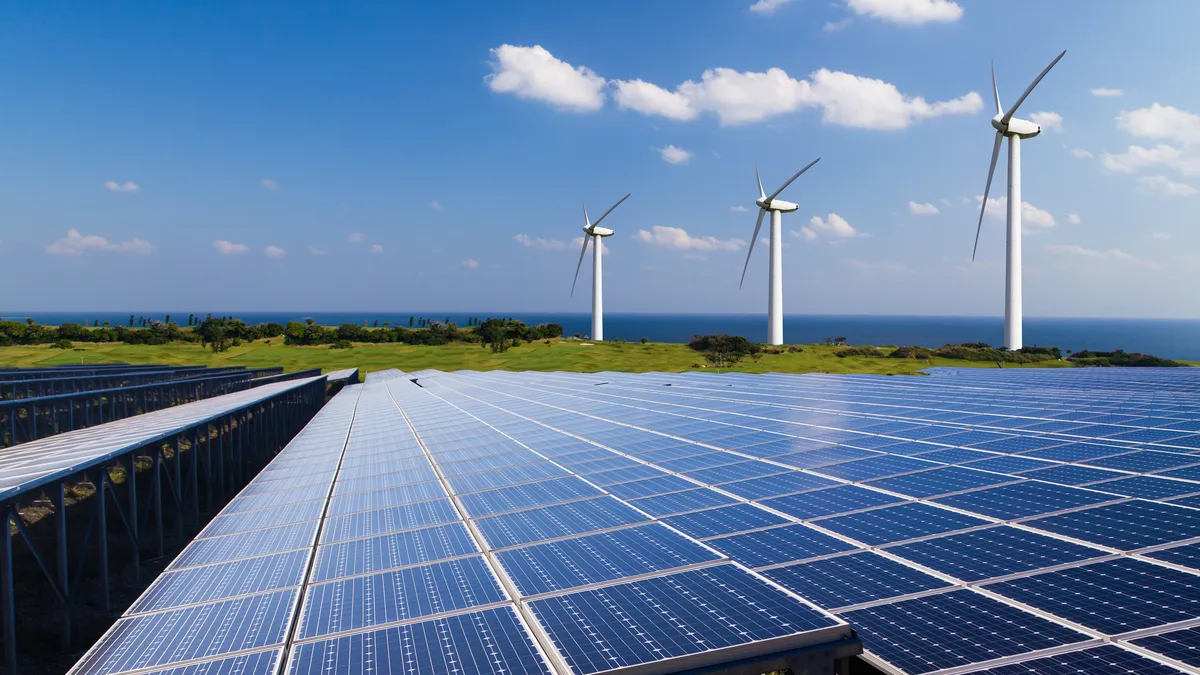Dive Brief:
-
The New York Legislature on Tuesday passed a $229 billion Fiscal Year 2024 budget that directs the New York Power Authority, or NYPA, to build, own and operate renewable energy projects. The move is intended to help the state reach targets established in a 2019 law to cut statewide greenhouse gas emissions by 85% over 1990 levels by 2050.
-
The bill also requires six peaker plants in New York City operated by NYPA to be shut by 2030, five years sooner than called for by Democratic Gov. Kathy Hochul. Critics say they are among the most polluting oil and gas plants and are typically sited in low-income neighborhoods.
-
Gavin Donohue, president and CEO of the Independent Power Producers of New York, said NYPA’s expanded role in energy markets is unnecessary. “There’s no shortage of private companies” seeking to finance and build renewable energy projects in New York, he said Wednesday in an interview.
Dive Insight:
The legislation calls for NYPA to “plan, design, develop, finance, construct, own, operate, maintain and improve, either alone, or jointly with other entities,” renewable energy projects that could include new solar and wind farms and energy storage projects.
Assemblymember Robert Carroll, D-Brooklyn, the bill’s primary sponsor, said that following a four-year lobbying effort, the Build Public Renewables Act that was included in the budget will transform NYPA “from a moribund agency to the most dynamic builder and owner of public renewables in the nation.”
Lee Ziesche, a spokesperson for Public Power NY, which lobbied for the Build Public Renewables Act, said advocates got three of four provisions they sought. In addition to the expanded role for NYPA and shutting peaker plants, the legislation will favor union labor in building renewable energy projects.
The one provision sought by several unions, their allies in the Legislature and the Democratic Socialists of America that failed to make it into the legislation was a requirement that the NYPA board include representatives of community groups, labor unions and others that backers said would make the agency’s governance more democratic.
Others, such as the free-market think tank Empire Center for Public Policy, said such a governing body would pull NYPA away from providing affordable and reliable energy.
Opponents to a broader state role in renewable energy development pushed back against the Build Public Renewables Act.
The Alliance for Clean Energy, for example, opposed Hochul’s proposal to authorize NYPA to develop, finance and operate renewable electricity generating plants. ACE, which includes environmental groups such as the Natural Resources Defense Council, and power companies such as Invenergy among its members, did not comment on the budget’s passage. It has previously said empowering NYPA would not solve transmission constraints, onerous permitting, nonstandardized project taxation and a lengthy and costly interconnection process.
Donohue of the Independent Power Producers of New York said “many of us in the business question if NYPA has the bandwidth” to fulfill much of what will be required in the legislation. NYPA operates 16 generating facilities and more than 1,400 circuit-miles of transmission lines.
He also said the role of democratic socialists is partly driving the politics of energy in New York where Democrats are in the majority in both chambers of the legislature, and Hochul, too, is a Democrat. Still, Donohue said “a lot has to play out” between now and 2025 when the NYPA provisions take effect.
Much of the attention from environmentalists and the construction and energy industries on the budget was on New York’s status as the first state in the U,S. to ban natural gas in most new buildings. Another measure, the NY HEAT Act was intended to make emission reduction targets a regulatory objective and failed to make it into the state budget.















